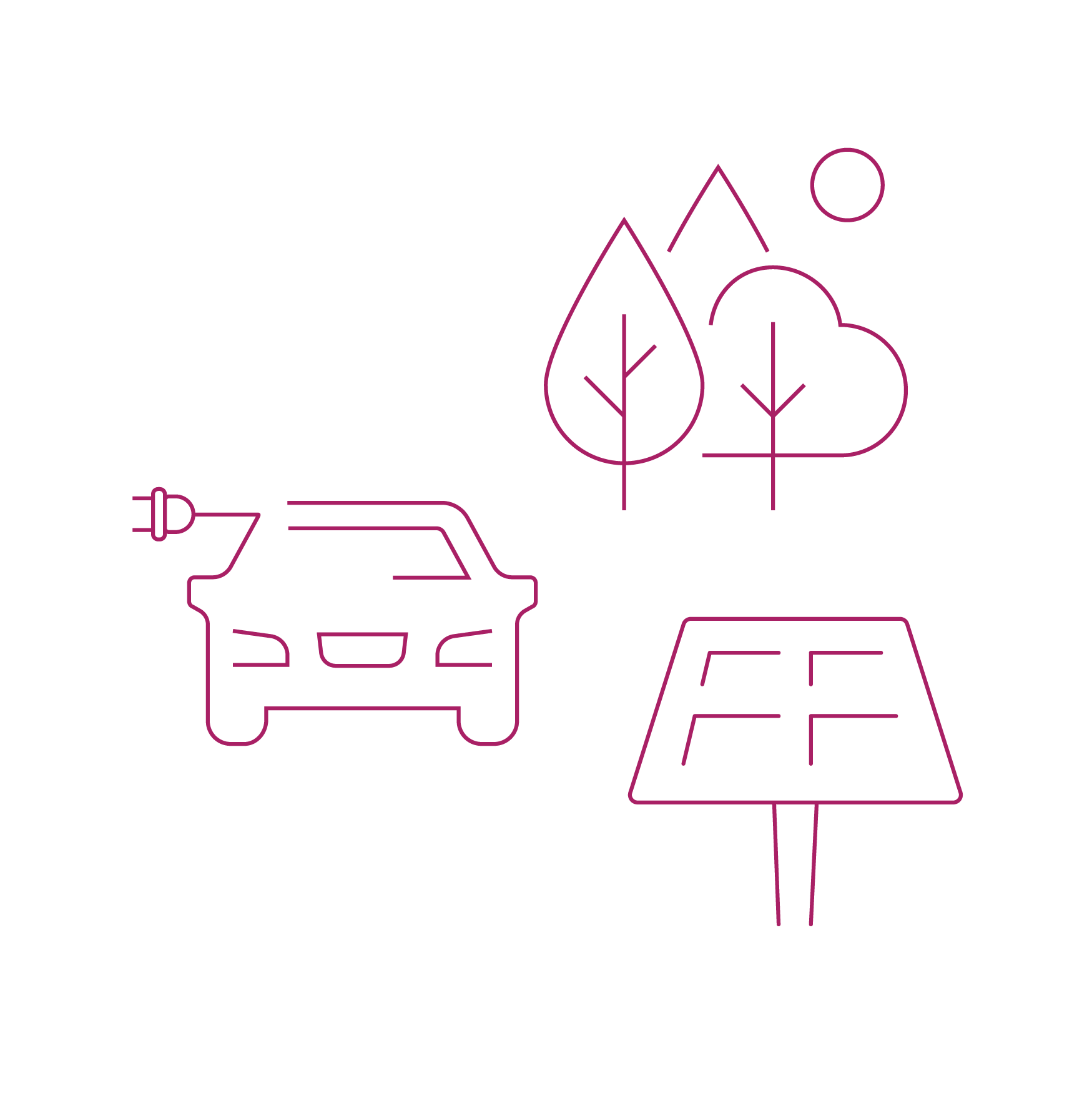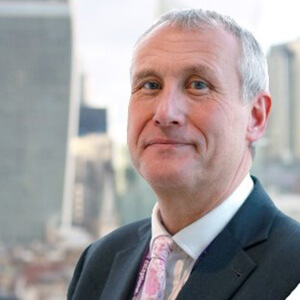Net Zero Navigator 2024
Expert decarbonisation predictions for the year ahead


Foreword

Let’s be blunt: decarbonisation is good for business.
It enables organisations to differentiate and gain competitive advantage.
But organisations embarking on the net zero journey have a decision to make: you need to choose who you want to be.
You can be a…
- Frontrunner
- Fast-moving follower
- Minimum effort organisation
While it’s acceptable to make changes to your strategy based on regulatory requirements and insights from what others are doing, there are gains to be made from taking a lead. By acting quickly, frontrunners will unlock cost benefits and investment opportunities. Minimum effort organisations will do nothing more than meet regulations.
But no matter what your strategy is, do the following three things:
- Automate carbon measurement and reporting
Take the work out of carbon reporting by harnessing the power of automation. This area will only grow in complexity, so address this now. - Commit to demonstrating the business case for decarbonisation
Lots of carbon reducing initiatives fall by the wayside due to a lack of enthusiasm and funding from senior leadership, plus unconvincing business cases. Dedicate yourself to promoting the benefits – both environmental and financial – to make sure you get the buy-in needed to progress towards net zero. - Focus on scope 3 emissions
The success of decarbonisation rests on a three-pronged approach to scope 1, 2 and 3 emissions. There’s no excuse for lack of action on scope 1 and 2 – reducing them is well within your control. With tighter regulations looming, pay much closer attention to scope 3 in the coming year to shape net zero plans.
Further predictions and advice in the Net Zero Navigator 2024 will help you on your way towards decarbonisation. And don’t miss the reviews of our 2023 predictions.
Decarbonisation can be tricky, but you don’t have to do it alone. The right partner will guide you towards net zero, no matter where you are on your journey.
“A single sustainability department cannot find all the answers alone. Organisations need to collaborate across all areas of the business, as well as with external partners who bring the right expertise to accelerate their efforts.”

Communication and collaboration are critical for decarbonisation success

Jim McClelland Sustainability expert
2023 was a tough one for those in charge of decarbonisation activities. While market conditions may have incentivised change in some organisations, others have been tempted into short termism and reactive, tactical solutions.
To decarbonise successfully, organisations need to:
- Measure carbon emissions and use analytics to extract insights and gain progress updates
- Manage strategic prioritisation of reaching net zero
- Message by broadcasting commitments and achievements to heighten impact
All this comes down to better cooperation — cultivating an open and transparent culture, with continuous feedback and dialogue rather than one-off PR statements.
What we’ve learned from 2023 is that no one person can change an entire organisation. If you get more key people to champion decarbonisation within, and if you leverage support from outside parties like customers, you’ll have more muscle to keep your organisation on the right track.
Why ‘recyclable’ can be a dubious word
Organisations that don’t make the connection between the climate agenda and the circular economy are failing to fully address their net zero obligations — and shortchanging shareholders and stakeholders by missing out on opportunities.
And the proof is in the pudding: circular economy strategies can cut global greenhouse gas emissions by up to 39%. But the truth is, without tackling scope 3 emissions, you won’t make a dent in your net zero targets.
This could involve using digital tools and remote maintenance to:
- Make machinery perform better and last longer
- Avoid breakdowns
- Save on carbon emissions (looking at embodied energy in the built environment)
- Improve resource management, including reuse and waste minimisation
But beware – ‘recyclable’ can be a dubious word. It may be technically possible to recycle some materials, but it’s not going to happen if the facilities aren’t available. And often ‘recycled content’ means merely downcycled or recycled once, which isn’t very circular.
Look for truly renewable, reusable or regenerative materials and be much more aspirational in terms of recycling potential.
Biodiversity is also an untapped opportunity. 23 new biodiversity targets were adopted for 2030 at the UN biodiversity conference COP15, but it’s not on enough organisations’ radars and will be a differentiator for those who do put it on their agenda.
Carbon offsets have been under real scrutiny, but organisations have the chance to flip the carbon offset problem into a biodiversity offset opportunity. Activities like rewilding are much more regenerative and imaginative.
Start thinking about your organisation’s plans for International Day for Biological Diversity on 22 May, 2024. Are you going to appoint a Chief Biodiversity Officer? Will you make a public biodiversity commitment? Make sure you do something and start building momentum. Don’t wait until the last minute when you’re already way behind.
Above all, don’t fall victim to green hushing, which is the sneaky and sinister version of greenwashing. It’s when organisations attempt to hide or disguise their net zero failings, or simply go quiet. In short, just as deceitful and dishonest as greenwashing, but harder to spot.
And don’t wait to see what happens over the next year, in Westminster or anywhere else. The clock is ticking for decarbonisation and it’s vital that we don’t lose the next 12 months.
The UK government has pledged to eliminate avoidable waste by 2050 and recycle 65% of municipal waste by 2035
Scope 3 emissions make up to 95% of an organisation’s carbon emissions
86% of UK adults want more openness from businesses on environmental impacts, activities and goals
"The clock is ticking for decarbonisation and it’s vital that we don’t lose the next 12 months."

2024 Decarbonisation Predictions

Contributors

Alex Avila
Director of Decarbonisation Consulting

Mike Sewell
Plan Zero Director

Elliott Bermudez
Head of Energy Advisory & Risk Management

Michael Taylor
Managing Director, Waste and Environmental

Alan Whitefield
Head of Energy Markets Research

Sarah Dorey
Sustainability Analyst

Matt Dale
Head of Transport Consulting

Don Holmes
Head of Natural Environment

Catherine Wheatley
Head of Data Science

1. Carbon reporting and measurement
Carbon reporting will move beyond mandatory requirements with automation making it quicker than ever

Alex Avila Director of Decarbonisation Consulting
In 2024, it will no longer be enough to only report on carbon to remain compliant.
The problem with mandatory-only reporting is that organisations do it once or twice a year. They record their carbon footprint and then nothing happens for another year until it’s recorded again. It’s not enough to make real change. Little wonder stakeholders are demanding ongoing carbon reporting, plus transparency with the results.
Scope 3 emissions are indirect emissions that accumulate across an organisation’s supply chain. These aren’t currently included in most mandatory reporting requirements and there isn’t a standardised way of measuring them. But that won’t be the case for much longer. Scope 3 will become mandatory and enforceable. So, it’s important for organisations looking to make an impact, and gain a competitive advantage, to start measuring supply chain emissions sooner rather than later.
For many customers the main barriers to voluntary reporting are:
- Cost vs opportunity
Many would rather spend the money elsewhere as they can’t see the value in the opportunity. - Cost and complexity of implementation
Implementing voluntary reporting across an organisation, over all operations and with everyone on board is complicated and often expensive. - Capture and management of data sources across the organisation
Organisations need a reliable system that enables dynamic, automated reporting, with comprehensive data giving a complete picture of carbon emissions.
There is an increasing need to report on carbon reduction programmes as a whole, determining how net zero will be achieved through specific initiatives. But while progress is monitored, tweaking the strategy to reach net zero should become part of the process. Reporting should be less about a snapshot of carbon emissions at any single point over the year, and more about how performance is tracking against the end goal of decarbonisation.
It’s important for organisations looking to make an impact, and gain a competitive advantage, to start measuring supply chain emissions.
My advice over the next 12 months is this: you don’t have to roll out automated carbon reporting to your whole organisation on day one. Start with a team, a department, a region or a function. Not every problem has to be solved before implementing a smarter reporting system. Start small, test your new systems and iron out any issues that do crop up before expanding.
Data will make or break decarbonisation efforts
This has never been more obvious than in the past 12 months. Carbon accounting is becoming as important and time consuming as financial reporting. Data is critical for this and to reduce the overhead burden that comes with it, many are now automating carbon reporting. Automation not only saves time and resources, it’s also required for those who want to move beyond the yearly, mandatory-only approach, to a strategy that is real-time and reaches deeper into their organisation.
of organisations say quality and accuracy are their biggest challenges in carbon and energy reporting*
The facts
The proportion of businesses that reported taking no action to reduce their carbon emissions fell from 46% in April 2021 to 30% in December 2022
According to a 2023 study, 70% of businesses are not calculating scope 3 emissions
If the UK is to uphold its commitment to reduce carbon emissions by 68% by 2030, the rate of annual emissions reduction outside the electricity supply sector must quadruple over the next six years

2. Strategy
Organisations that reduce emissions will increase their bottom line

Mike Sewell Plan Zero Director
Organisations often fail to invest in energy efficiency due to a lack of understanding of the benefits, rather than a lack of capital. Most customers are thinking: “I need to know why I’ll do this in the next year or two. I don’t want to feel better about it in 10 years’ time. I need the benefit now.”
It’s important to understand the cost benefits of ESG investments. Decarbonisation, when viewed as an opportunity rather than a risk, has the potential to improve bottom lines through energy efficiency and generation.
Organisations need to see they can drive efficiency without capital expenditure by identifying and addressing inefficiencies in their operations. And to organisations saying they can’t afford to decarbonise – the reality is that you can’t afford not to. Inefficiencies cost money, so get started by fixing them without huge spend. Meanwhile, there’s still time to build up to bigger, more operationally transformational changes.
To organisations saying they can’t afford to decarbonise, the reality is that you can’t afford not to.
My advice is for organisations to commit to opportunities to improve their bottom line and reduce carbon emissions, despite any political uncertainty. This means continuing to pursue opportunities such as investing in renewable energy, seeking out energy efficiencies, supply chain optimisation and adopting green technologies.
Greater clarity will drive decarbonisation confidence
Commitment to decarbonisation has definitely grown throughout 2023. More and more organisations understand it’s not just about changing fuel sources, but that energy use must be reduced. This is a significant step. While there is political noise about net zero, plans to save energy, trim costs and reduce carbon emissions remain a priority.
of organisations say their net zero strategy has improved investor engagement*
The facts
71% of respondents voiced support for the UK government’s commitment to net zero in a survey of 4,000 adults
To reach net zero by 2050, annual clean energy investment worldwide needs to more than triple by 2030
56% of people would be more loyal to a brand if they could see that it was taking steps to reduce its carbon footprint

3. Energy consumption
AI will be critical to reducing energy consumption – but some caution is needed

Elliott Bermudez Head of Energy Advisory & Risk Management
AI’s impact on decarbonisation will soar — and that’s because it has massive benefits.
We’re adopting it and customers are certainly embracing it, but we also have to be aware of challenges in the energy market that are driving that growth.
AI can of course accurately forecast energy supply and demand, increasing reliability by preventing grid failures and enabling huge scale digitalisation.
But AI isn’t just something that is there, ready to go. It needs to be developed as it grows and, if we aren’t careful, it’s going to become a huge drain on organisations’ energy consumption. We need the power to fuel this tech-enabled future, and in this we find both a challenge and an opportunity.
AI can accurately forecast energy supply and demand, increasing reliability by preventing grid failures and enabling huge scale digitalisation.
While AI can help organisations understand their energy consumption habits, it’s also incredibly resource intensive. Providing adequate power for the technology of tomorrow will be difficult to do cheaply if you don’t have the right energy strategy in place. So, embracing AI will be critical for reducing consumption, but be sure your organisation has thought about how to mitigate the corresponding costs and energy use.
Surging demand for on-site solar will create supply bottlenecks
The scenario predicted last year has absolutely come true. There’s been a huge acceleration in organisations’ attempts to control energy costs and to meet their net zero targets. Those who have put measures in place to better manage and / or generate their energy with solar PV are already benefiting. The rest are scrambling to get things under control. This sudden surge in demand for solar – coupled with both a technology and capacity crisis – means that bottlenecks have started to emerge.
of organisations have implemented AI or IoT technology to gain more insights into energy usage and carbon emissions – yet one third of organisations do not feel confident about their ability to predict energy use over the next 12 months*
The facts
£6billion a year could be saved by UK organisations through investment in energy efficiency
18% of organisations surveyed by Mitie have considered AI to gain more insights into energy usage and carbon emissions, but have yet to take action
£4m in funding for AI solutions to support decarbonisation was announced by the UK government in August 2023

4. Water
By reducing water consumption organisations can tap into a quick win that gives a competitive advantage

Michael Taylor Managing Director, Waste and Environmental
Prioritising water conservation can bring cost savings and environmental benefits, but also help organisations meet regulatory objectives.
Water conservation comes under scope 3 emissions. Measuring these will soon be essential for compliance in the national effort to reach net zero by 2050. This means organisations that get a handle on their water consumption are one step closer to fulfilling sustainability obligations.
Extreme weather events, such as flooding and rising sea levels, are linked to climate change. The vast amount of energy used to clean and pump water means the UK water industry contributes almost 1% of the country’s total carbon emissions. So, reducing consumption is critical to achieving net zero and avoiding a climate catastrophe.
Water conservation comes under scope 3 emissions. Measuring these will soon be essential for compliance in the national effort to reach net zero by 2050.
While there is a shift in attitude towards the carbon footprint of organisations’ water usage, how can savings be made in commercial environments? Quick wins are possible with minimal investment. For example, checking that metering is operating efficiently, fixing any leaks and deploying simple efficiency fixtures, such as toilet cistern water displacement devices. Water audits can also reduce usage by up to 40%.
Water’s role in decarbonisation will become crystal clear
The importance of water to decarbonisation is now more widely recognised than at the beginning of 2023. Our latest research shows 82% of respondents have undertaken a water audit to reduce carbon emissions. So, it’s clear that more and more organisations are accounting for water in their decarbonisation strategies.
of organisations say they have a fully developed and implemented strategy to protect against extreme weather events*
25% of water supplied to business customers is lost in leaks
4,000ML reduction per day of water usage should be delivered by 2050 — equivalent to 22 million bathtubs of water
Data centre cooling in business is hugely water intensive, with even a small 1MW data centre using approximately 25.5m litres of water every year

5. Energy generation
Prepare for the new energy mantra: Reduce. Flex. Generate.

Alan Whitefield Head of Energy Markets Research
In energy terms, things aren’t going back to normal. The cost of energy isn’t likely to fall to pre-pandemic levels. And the energy price instability we’ve seen recently will continue, with further energy crises every few years.
As a result, more organisations will need to find ways to reduce their reliance on the national grid and lower their exposure to global energy market volatility.
We predict many adopting a three-step approach to secure their energy supply:
- Reduce
Firstly, the less energy organisations consume, the less vulnerable they are to sector volatility. So it makes sense to implement simple consumption reduction measures like LED and energy-saving light bulbs. - Flex
Secondly, being flexible and agile in the response to the fluctuating energy market. This means an organisation’s consumption patterns will vary day-to-day, and even hour-to-hour, according to changing energy costs. While organisations are unlikely to shut down entire sites for hours at a time, a flexible response to the energy market will become more common. For example, retailers will close quiet stores an hour earlier to reduce power costs. - Generate
Thirdly, investing in self-generation, as well as power purchase agreements, renewables and battery solutions. For example, solar panels are now much more widely available and more organisations will install them to reduce reliance on the national grid. It will only be a few more years before panels populate the last suitable rooftops.
Organisations will need to find ways to reduce their reliance on the national grid.
Ultimately following the new energy mantra of ‘Reduce.Flex.Generate’ will help organisations withstand the complex energy market ahead.
A culture of conscious consumption will take centre stage
Last year sustainability was indeed about conscious consumption: smart meters, turning the lights off and focusing on everyday habits. Awareness of the finite nature of energy is increasing and organisations are adapting behaviours to conserve as much as possible. Under the Demand Flexibility Service, the government will incentivise organisations to reduce usage. Now more organisations are willing to sign up.
of organisations say they have adapted their energy consumption patterns and operations to take advantage of energy demand flexibility*
The facts
Demand for energy has continued to grow on average 1.9% every year since 2000
Demand reduction can help the UK halve its emissions by 2050
36% of businesses report investing in on-site generation to help them become more energy resilient, with solar being the most popular option
Key World Energy Statistics 2021, IEA; Positive Low Energy Futures, CREDS; 2023 Business Energy Tracker, Innovation News Network

6. Waste
Circular procurement will be a secret weapon when reducing waste

Sarah Dorey Sustainability Analyst
We’ll see organisations act in a more proactive way, ensuring they’re segregating and disposing of their waste correctly. The focus now should be on the circular economy, and that trickles down from the start of a product’s lifecycle right to the end.
Much of this is mandatory in some parts of the country – such as the four bin segregation system in Wales. The legislation means that organisations failing to dispose of waste properly, as well as those failing to segregate, will be subject to fines.
Investors are becoming more aware of the growing risks posed by plastic usage and waste production. Organisations failing to act will not only face financial penalties, but will struggle to attract and retain investment from those looking to support sustainability-led partners.
It’s thinking about how materials will be disposed of even as early as the procurement process.
There are ways organisations can get on top of this more easily. AI for waste management might be in its infancy, but we’re seeing more organisations adopting technology that can help track, manage and dispose of waste.
Even more important is the need for a strategic, full circle approach to waste management — and the conversation starts with procurement. It’s thinking about how materials will be disposed of even as early as the procurement process. To encourage this, there needs to be more collaboration between procurement and disposal — part of what we call circular procurement.
My advice is to consider what waste a product or material will generate as early as the procurement stage, and to understand how to segregate and dispose of it.
Plastic recycling will become a profitable priority
Plastic consumption rates have been rising — but there must be more commitment to plastic recycling before this prediction can be said to have come true. Fortunately, there’s much more demand for recycled plastic within packaging. However, delays to deposit return schemes, like in Scotland, have set back many recycled plastic initiatives. Waste management costs are rising, which is a huge concern for lots of organisations, so the question about plastic is more prominent than ever.
of organisations say they have a waste decarbonisation strategy but that it needs further improvement*
The facts
The amount of solid waste produced in the UK is likely to increase by 73% to 3.88bn tonnes by 2050 if action to recycle is not taken
185 investors wrote to the world’s biggest grocery, retail and consumer goods companies to warn of the risks posed by continued use of plastics
An estimated 250,000 tonnes of UK plastic waste was mismanaged in 2023

7. Transport
Despite issues with EV infrastructure, proceeding with confidence will be essential to meet transition deadlines

Matt Dale Head of Transport Consulting
Organisations that have started to implement their EV transition are well placed compared to those who are hesitating.
There are lots of legitimate concerns about how to roll out EVs effectively. Limited driving range, workplace charging port installations, the lack and cost of public charging and accessible charging for vans are all big worries. The lack of legislation detailing where infrastructure can go at a depot or a workplace, or how drivers should be reimbursed for charging and parking costs, is also becoming more of an issue.
But globally, around half the vehicles on roads are operated by businesses. Figures for 2023 show 75% of new EV registrations are by organisations or fleet operators. So, organisations now have to think about solving these problems.
For concerns regarding EV range, organisations should conduct assessments of their daily needs. Many electric vehicles do have sufficient range for everyday routes. And with advancements in battery technology, organisations can be assured that travelling ranges will continue to increase.
Limited driving range, workplace charging port installations, the lack and cost of public charging and accessible charging for vans are all big worries.
By increasing the number of charging ports and other EV infrastructure on their sites, organisations can provide convenient and reliable charging stations. It’s also possible to plan routes based on access to the growing charging network. There are several easily accessible websites and applications designed for this purpose.
We’re also seeing vehicle manufacturers struggle to share experience and knowledge with customers beyond the point of sale. To drive learnings and efficiencies, organisations need EV infrastructure analysis to be a continuous, strategic process. One-off consultations no longer make the cut.
The new official deadline for EV transition has created some breathing space. Being panicked into rapid adoption may lead to the premature disposal of useful working tools in the process. To avoid this, organisations should use the extra time to:
- Audit existing assets
- Review the use and demand of their fleet
- Plan for anticipated future needs
- Decide on an EV strategy
Tardy organisations will get stuck in the EV fleet rush
This prediction holds true. Many organisations are only just realising the importance of transitioning their fleets. In general, organisations aren’t moving quickly enough.
Operators are nervous about EVs compared to the range and capability of internal combustion engine vehicles. Concerns around the logistics of charging, storing and maintenance are causing delays in many organisations’ transitions. Plus, electric truck manufacturers have also been slow to market.
Despite these issues, and the ban on internal combustion engines being pushed back five years, it doesn’t mean organisations should delay EV fleet transition.
of organisations cite charging costs as the biggest barrier to switching to a fully electric fleet*
The facts
800,000 EVs have been registered in the UK since 2018, on track to reach 18% market share by the end of 2023
2035 is the new cutoff for the sale of newly manufactured diesel and petrol cars in the UK
Two thirds of drivers want to go electric but are held back by lack of incentives and infrastructure

8. Nature
The business case for biodiversity net gain will grow stronger than ever

Don Holmes Head of Natural Environment
Nature recovery is key to reaching net zero. But while many organisations view themselves as nature positive, there are still very few that have implemented enough green infrastructure, such as parks, woodland and green walls.
This year we’re encouraging a phased approach to integrating these natural spaces to make costs more manageable. That means providing costed roadmaps to delivering a measured increase in biodiversity. These can be rolled out across multiple financial years.
There’s a business case for nature recovery as it improves the wellbeing, health and productivity of people working in these buildings and environments. Research also shows increased footfall with retail and hospitality through enhancing customer experience, and improving biodiversity is one way to do so.
Commercial businesses are leading the way – and we’ll see more action over the next year. That means more living walls, sustainable urban drainage systems like rain gardens, and more urban trees and parklets to help with water management, temperature moderation, air cleaning and recreation.
Begin by building a biodiversity strategy and assessing nature-related risks and impacts, as well as identifying opportunities for green infrastructure.
Biodiversity gain will feature more heavily in net zero considerations. Decision makers will prioritise nature recovery and, having realised the business case for measuring biodiversity net gain, they’ll take a vested interest in that too.
No matter how complex your organisation, there are always opportunities for nature recovery. Begin by building a biodiversity strategy and assessing nature-related risks and impacts, as well as identifying opportunities for green infrastructure. Making a start could be as simple as adding leafy plants and trees to your office.
2023 prediction review: Enhancing biodiversity will take root to become a legal requirement
This prediction was almost true for 2023 – and will be true in 2024.
Legislation for Local Planning Authorities to ensure that new housing, commercial and industrial developments have 10% biodiversity net gain has been pushed back until the start of 2024. But this legislation has raised awareness for what needs to be achieved, how it can be achieved and how to measure progress.
We’re having more conversations with customers about moving from biodiversity theory to practice, which means increased commissions for baselining and net gain installation.
of sustainability decision makers with net zero reduction targets see their organisation’s strategy as nature positive
The facts
50% of the global GDP is at risk if nature degradation is not reversed before 2030
29% of businesses who report on biodiversity efforts have board or executive-level oversight for nature-related activities
5% of companies globally assess their impact on nature, biodiversity and the environment
World Economic Forum; Climate Change Questionnaire 2022, CDP; World Benchmarking Alliance

9. Data
Organisations laying the groundwork for smarter data collection and benchmarking will be better prepared for the energy market of the future

Catherine Wheatley Head of Data Science
Historically, a lot of benchmarks created a static line in the sand. But with changes to building usage since the pandemic, benchmarks have needed to become much more dynamic.
Dynamic benchmarking covers a number of areas including benchmarking across your own estate, categorising buildings by size and type, and benchmarking sites against each other. The biggest difference is that the benchmark data is updated in real-time, or much more often than once or twice a year. It provides a more accurate, relevant and responsive understanding of how buildings are using energy. Combined with exception reporting – setting expectations for how buildings should perform, and targeting the areas that perform below those expectations – this is an effective way to spot opportunities and inefficiencies.
To really get ahead, organisations need to go beyond collecting only the data that they absolutely need, like energy volumes and metre readings). They must start collecting as full a dataset as possible.
Organisations will understand whether to use or store energy on a day-by-day, hour-by-hour basis, based on what matters most to them.
It’s also important to examine the frequency of data collected. Establishing a dynamic energy use benchmark for your buildings requires data sets to be updated in real-time – certainly much more often than just once or twice a year. In doing so, an accurate picture of how buildings are using energy will emerge, revealing opportunities and inefficiencies such as:
- Impact of technologies like on-site generation
- What should and shouldn’t be turned off to reduce energy consumption
- How to plan for days without much wind or sun, when grid prices soar
Through comprehensive data collection, proactive organisations will become truly agile. Faced with the volatile energy market of the future, they’ll know whether to use or store their energy on a day-by-day, hour-by-hour basis, based on what matters most to them – be that price or carbon emissions.
A culture of conscious consumption will take centre stage
See ‘Energy Generation’, section 5: ‘A culture of conscious consumption will take centre stage’
of organisations cite lack of standardised reporting frameworks as a major difficulty of carbon and energy data reporting, while 35% see data silos and disparate systems as a problem*
The facts
60% of UK organisations were found to be unlikely to meet scope 3 emissions reporting required under the EU’s Corporate Sustainability Reporting Directive
Electricity produced by new renewable energy projects is expected to be up to seven times cheaper than that generated by gas-powered plants by 2030
35% of organisations surveyed by Mitie said they accelerated their decarbonisation timelines in 2023
Climate Disclosure Review; Department for Energy Security and Net Zero
*Source: Mitie-commissioned survey of 100 respondents at senior manager level and above with responsibility for corporate sustainability in companies of 1,000+ employees.
Let’s talk further …
We’re here to help you accelerate progress and navigate towards net zero across carbon reporting, energy, strategy, waste, EV transition and more – whether that’s quick wins or long-term strategies.
Simply fill in the form and we’ll be in touch.